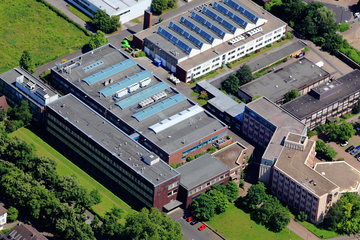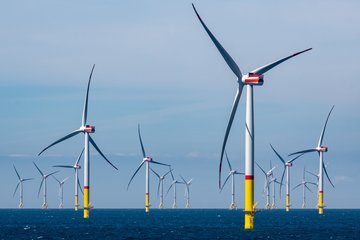Big Science
Through the integration of the IPP into the Max Planck Society, the Institute is opening a new chapter in its history, which goes back to Werner Heisenberg

Text: Susanne Kiewitz
Since 2003, the Max Planck Institute for Plasma Physics (IPP) has had to answer to two entities. In financial terms, it was under the control of the Helmholtz Association and in legal terms under the control of the Max Planck Society. The unusual constellation has now been dissolved by Senate resolution. As of 1 January 2021 the Institute has been incorporated into the governance of the Max Planck Society.
The organizational structure of the IPP was also under debate when it was founded in 1960 – because it was clear from the start that fusion research at the IPP would need to be carried out on a large scale. It was therefore founded as the Institute for Plasma Physics GmbH in the Max Planck Society in 1960. However, it had its own legal form. The driving force was Werner Heisenberg, Nobel Prize winner in physics and Director of the Max Planck Institute for Physics and Astrophysics. He was one of the two partners necessary to register the GmbH and paid DM 3,000 out of his own pocket towards the founding capital. The larger proportion of 20,000 DM was contributed by the Max Planck Society as the second shareholder.
A look at the history of the Institute is not only an example of the development of highly specialized large-scale equipment but also shows how Big Science changed the scientific culture of the Federal Republic of Germany and the Max Planck Society. The hallmarks of Big Science include team-based working structures and creative administrative solutions in order to enable collaboration between a wide range of different institutions and political systems.
A directional decision: the entry into large-scale research
For the Max Planck Society, which had reconstituted itself in 1948 from the ruins of the Kaiser Wilhelm Society and had taken over its guiding principles, large-scale research was largely unknown territory. Until then, it had set up smaller, hierarchically organized institutes in accordance with the Harnack principle. For the most part, the researchers themselves were responsible for maintaining international collaboration. Accordingly, Heisenberg’s idea of founding an Institute for fusion research, which was much more costly and equipment-intensive than anything that had existed before, didn’t go down particularly well within the Max Planck Society.

Heisenberg had headed the Kaiser Wilhelm Institute for Physics since 1942 and put it on the map as the centre of German atomic research. From 1948, he seamlessly transferred his Institute to the Max Planck Society and moved it to Munich in 1958. During this time, it was clear that Germany was lagging behind in the field of nuclear research – also because of the Allied research ban that was in place until 1955. At the same time, there was massive political interest in this research. This led to the founding of the Federal Ministry for Atomic Questions in 1955 with Franz Josef Strauß at its head. While the Adenauer government pursued both the economic and military use of nuclear energy, the scientists were concerned with basic research and making nuclear power usable as an energy source through new types of power plants.
New paths – fusion research
During this time, Heisenberg was an influential driving force behind a German nuclear research strategy. He lobbied Minister Strauß to promote the new fusion research. As Heisenberg wrote to Strauß (10 October 1956) - “the experimental and theoretical study of the aforementioned processes is still quite young everywhere. Germany can thus still join the international competition with a reasonable prospect of success”. His own Institute became a nucleus when the plasma physics working group began its work there in 1956.
After the lion’s share of the financing for the new IPP was secured by the European Atomic Energy Community EURATOM, the research work began. It was initially broadly theoretical and experimental. From the onset, the development of different types of equipment for generating plasma was essential. As early as 1960, the small Wendelstein 1-A stellarator facility went into operation. This marked the beginning of the development series for the Wendelstein experimental facility, which is currently operated at the Greifswald site.
In 1970, Pulsator was added as the first tokamak plant; this led to Asdex technology in 1980. During this time, the Institute played an important role in the worldwide cooperation network of international fusion research. When Asdex Upgrade went into operation in Garching in 1991, the Institute passed the precursor on to the South-Western Institute for Plasma Physics in Chengdu, which helped China to strengthen its activities in fusion research.
The reintegration of the Max Planck Institute for Plasma Physics into the Max Planck Society is now finalized for 1 January 2021. In its session, the Senate approved the budget of the IPP. Shortly before, the Joint Science Conference (GWK) had approved the budgetary integration of the IPP. The Helmholtz Association of German Research Centres (HGF) and the Max Planck Society had previously agreed to continue the close scientific collaboration and to end the association of the IPP with the HGF. A good basis for Big Science and another chapter in the successful history of the Max Planck Institute for Plasma Physics in Garching.












